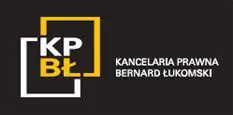Warsaw, May 21, 2024
Understanding the Cash PIT Method for Small Business Entrepreneurs
The Cash PIT (Personal Income Tax) method is a newly introduced settlement method aimed at small business entrepreneurs. It allows for the determination of income generation dates from business activities and the deduction of income-related costs upon settling receivables. Here’s a comprehensive overview of how this method works and its implications for eligible taxpayers.
Who Can Benefit from Cash PIT?
Cash PIT is available to taxpayers who:
- Run a business and pay income tax according to the tax scale (Article 27 of the PIT Act),
- Utilize the IP BOX (Article 30ca of the PIT Act),
- Opt for a flat tax rate (Article 30c of the PIT Act), or
- Pay a lump sum tax (Chapter 2 of the Lump Sum Tax Act).
To qualify, taxpayers must derive income solely from their own business activities. This means individuals engaged in civil or general partnerships do not qualify. However, entrepreneurs starting a new business can use Cash PIT for revenues generated in the year of commencement.
Revenue Limits and Eligibility
Eligibility extends to taxpayers who did not exceed an income limit of EUR 250,000 from their business activities in the previous tax year. If a taxpayer exceeds this limit, they will lose the right to use the Cash PIT method only in the following tax year. Current year revenues do not affect the right to use the method until the next tax year if they surpass the limit.
Declaration Requirements
To opt for the Cash PIT method, taxpayers must submit a written declaration by February 20 of the tax year. For new businesses started during the year, the declaration must be submitted by the 20th day of the month following the start of the business or by the end of December if the business starts that month. This declaration remains valid for subsequent years unless the taxpayer decides to resign, which requires a new declaration by February 20 of the relevant tax year.
Income and Cost Recognition
Under the Cash PIT method, income is recognized on the date the receivable is settled or paid. This includes partial settlements such as advance payments, prepayments, or installments. If a receivable remains unpaid, revenue must be recognized no later than two years from the invoice issuance date. This prevents the deliberate postponement of payments to avoid income tax.
Applicability and Limitations
The Cash PIT method is specifically designed for transactions documented with invoices and applies to B2B transactions, where both parties are entrepreneurs as defined by the Entrepreneurs’ Law of March 6, 2018. It does not apply to transactions with related entities or revenues from the sale of fixed and intangible assets, which follow the accrual method.
Deductible Costs
Costs are deductible in the tax year the receivable is paid, including advance payments, prepayments, and installments. Depreciation write-offs are also deductible for tax purposes even if the asset price has not been fully paid.
Conclusion
The Cash PIT method offers a flexible and beneficial tax settlement option for small business entrepreneurs, simplifying income and cost recognition. By understanding the eligibility criteria, declaration requirements, and applicable transactions, taxpayers can effectively leverage this method to optimize their tax obligations. For tailored advice and assistance, consulting with a tax lawyer is highly recommended.
